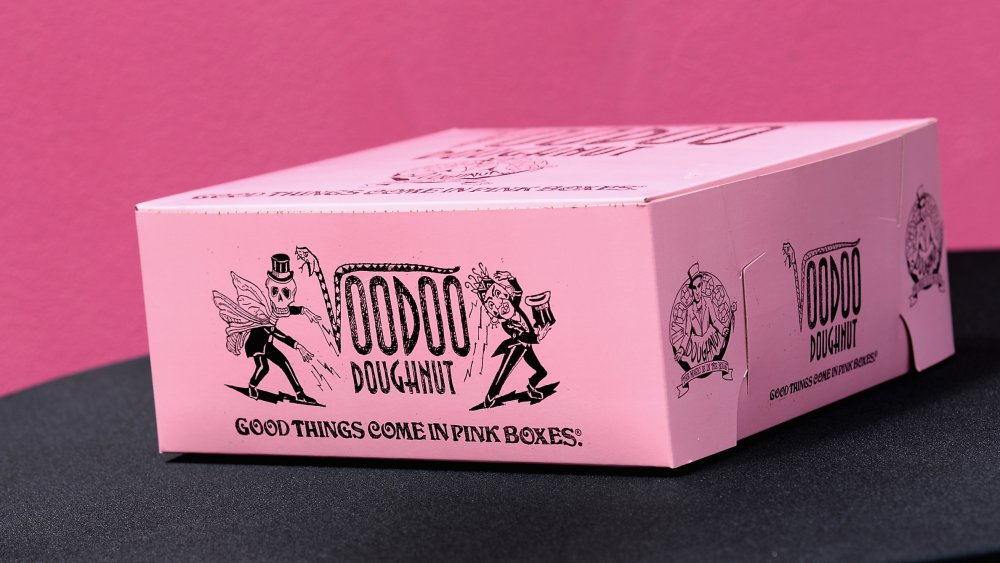The Real Reason So Many Donuts Come In Pink Boxes
Sometimes a seemingly-harmless or arbitrary food tradition can have a jarringly-dark backstory. For example, in a letter to The Guardian, University of Warwick professor Rebecca Earle remarks that Spain's "love affair with pork" dates back to the Spanish Inquisition. Specifically, a diet high in porcine flesh became "a matter of life and death" because refusing to eat pork was viewed as proof that the refuser was Jewish, turning them into a target of persecution. But what about the United States' tendency to put donuts in pink boxes? That sounds too innocent for a morbid origin story, right?
Wrong. The tradition of putting donuts in pink boxes is tied to atrocities wrought during the Vietnam War. For context, History explains that in 1969, President Richard Nixon commenced Operation Menu, a series of secret bombing campaigns against Cambodia, with food-themed code names. It began with Operation Breakfast, a 14-month undertaking in which B-52 bombers carpet-bombed Cambodia amid suspicion of war-related communist activities. As PBS describes, the indiscriminate destruction likely paved the way for the genocidal Khmer Rouge regime to take hold in Cambodia. This led to a surge of refugees fleeing to California, according to Time. Among them was the man behind the pink donut box.
From Khmer Rouge to commercial pink
In 1975, refugee and future donut mogul Ted Ngoy fled the brutal Khmer Rouge in Cambodia and relocated to California. There, he set up shop, specifically a donut shop called Christy's Donuts. Five years later, he had 20 locations. Apparently willing to spread the wealth, Ngoy helped hundreds of incoming Cambodian families launch their own donut businesses. It was during the '80s that the pink donut box took off.
Food & Wine writes that after looking for cheaper alternatives to white boxes, the Cambodian shops got inexpensive, leftover pink boxes from the Westco company. Portland Monthly further shares the color white is tied to death in Cambodian culture. Lore also states a Cambodian immigrant named Ning Yen may have requested the rosier hue because it signaled "good fortune." But Ngoy framed the switch in strictly economic terms: "We doughnut makers were all about saving money. Why buy the more expensive white? Save a few pennies and make big bucks." The pink box later got picked up by Hollywood, turning pink boxes of donuts into a nationwide phenomenon.

